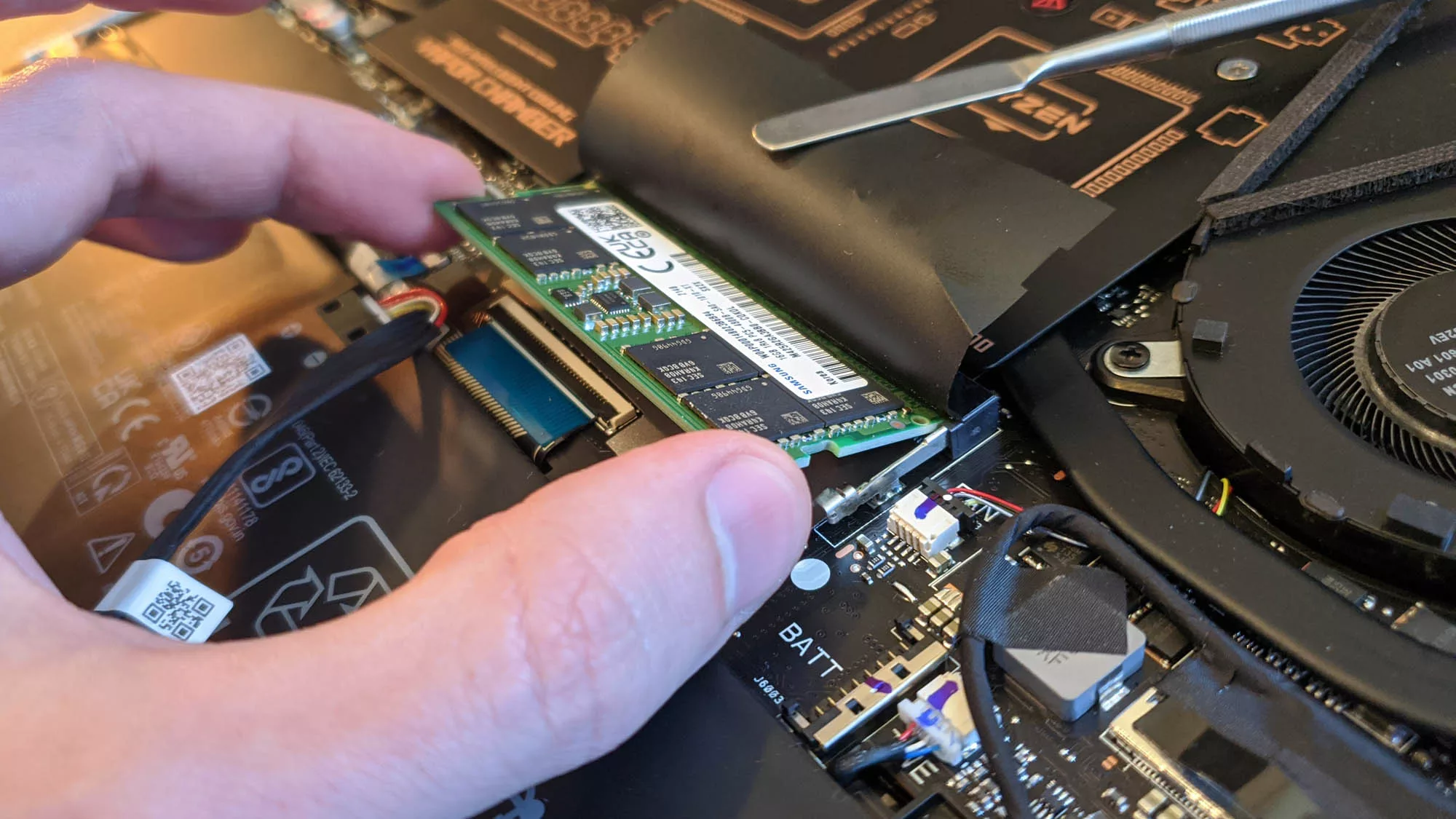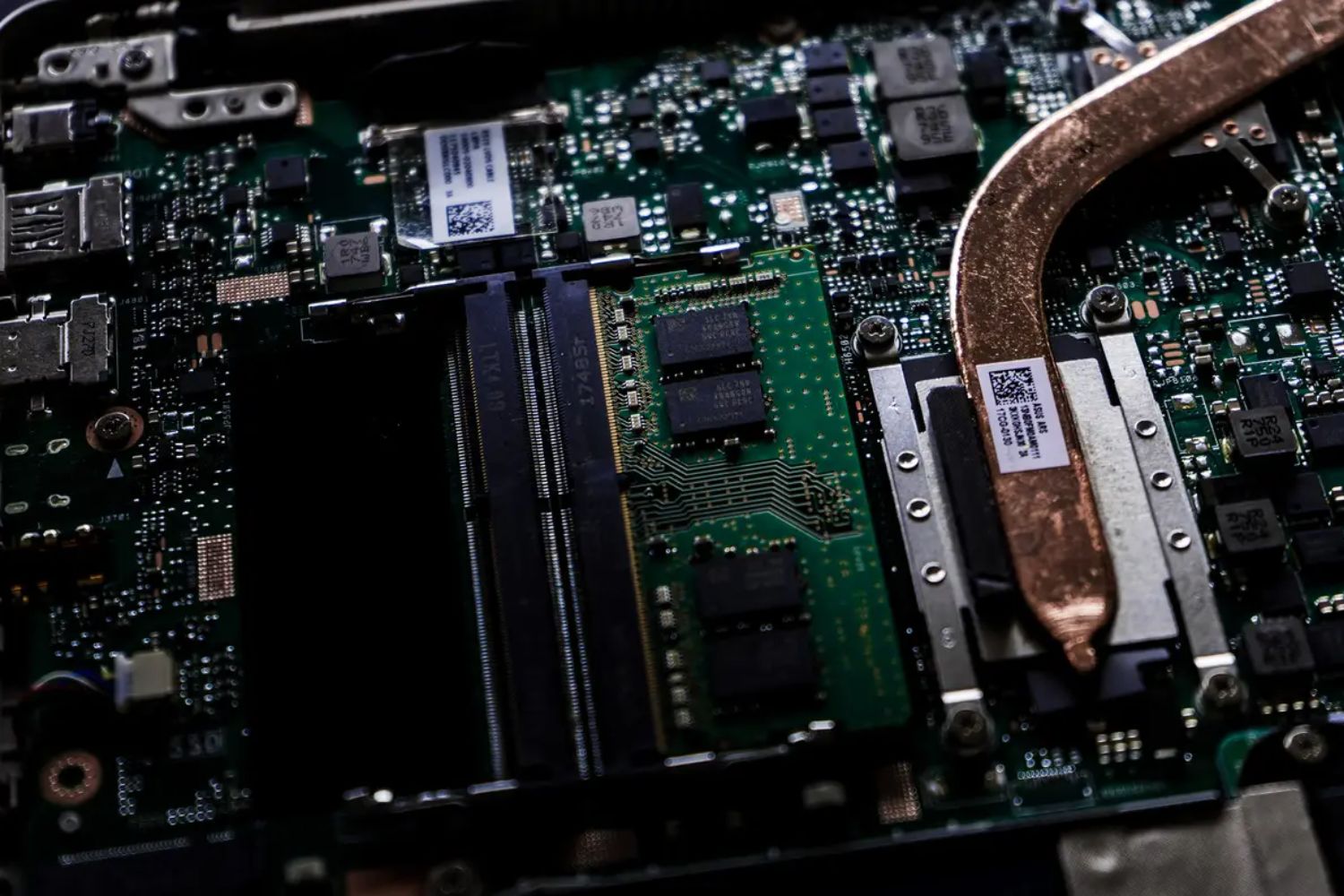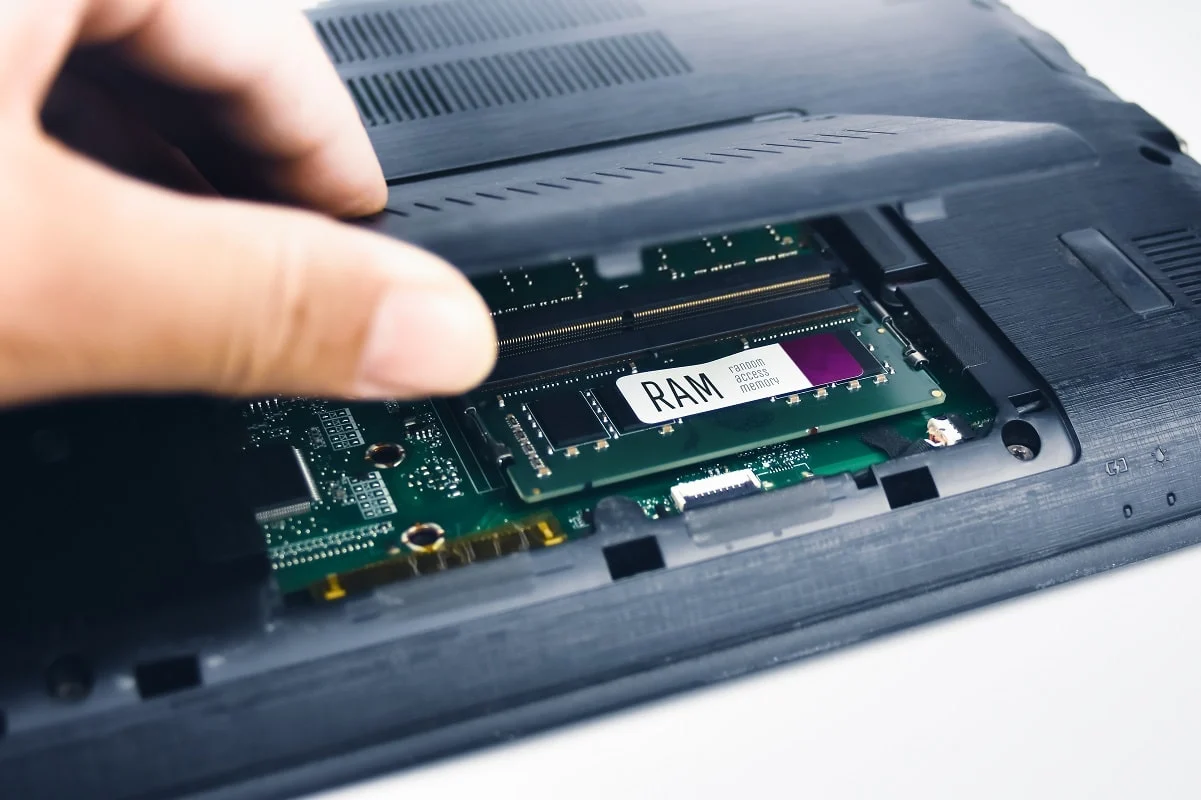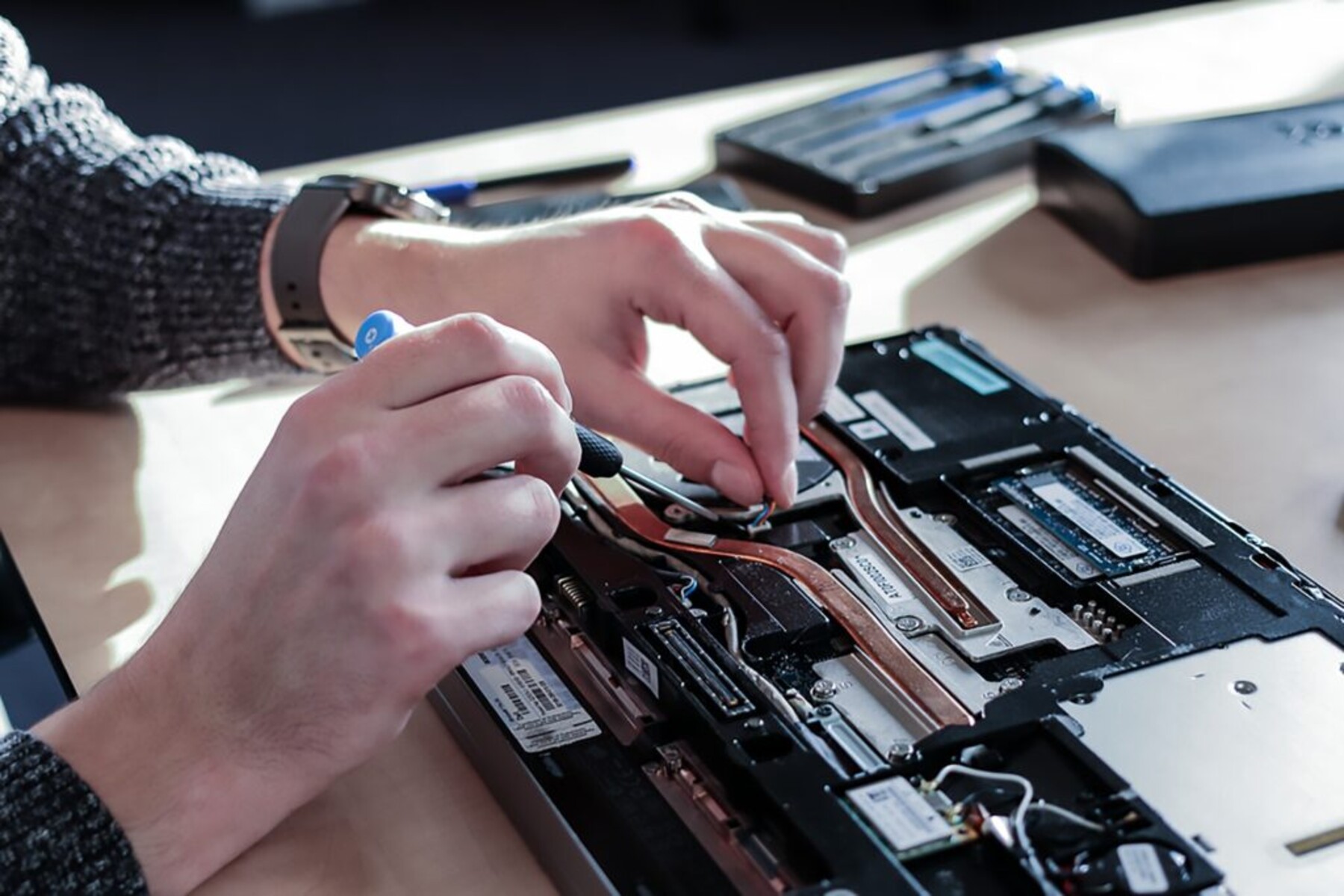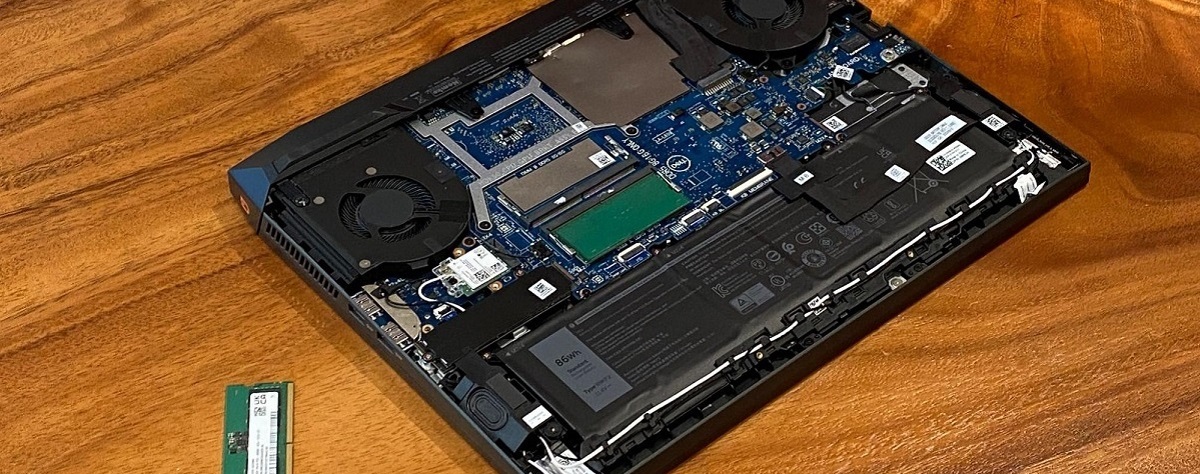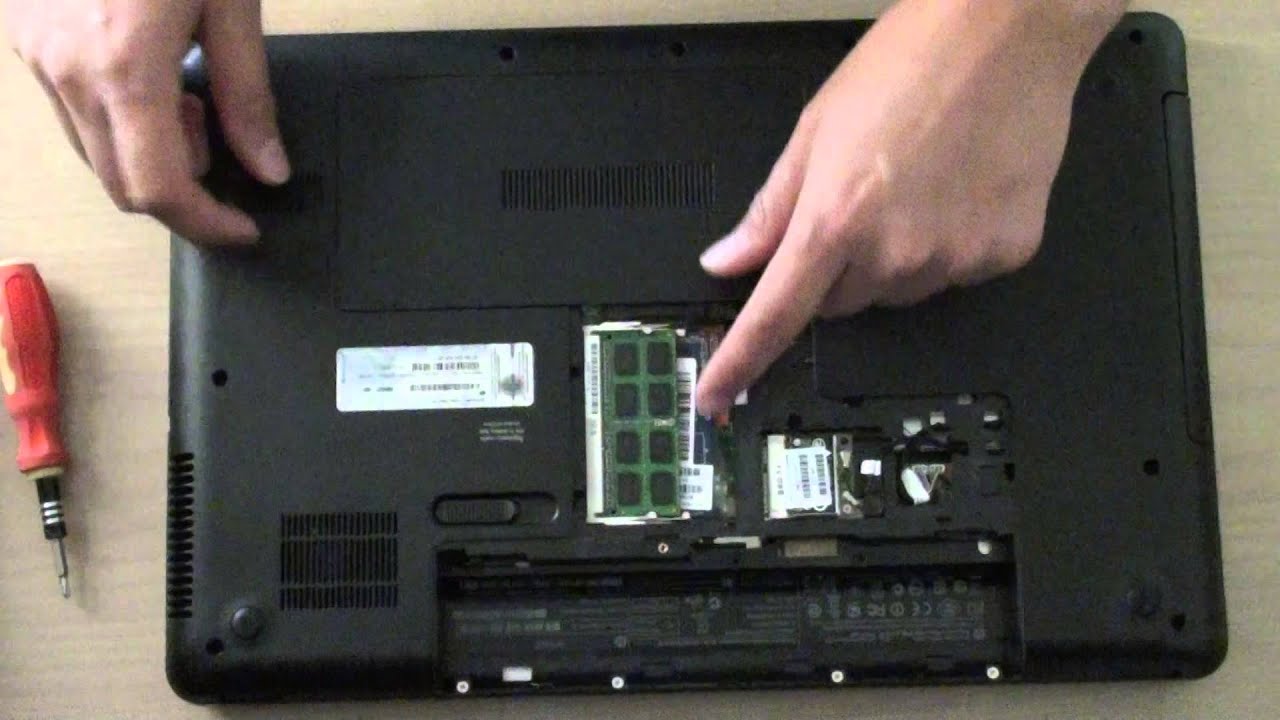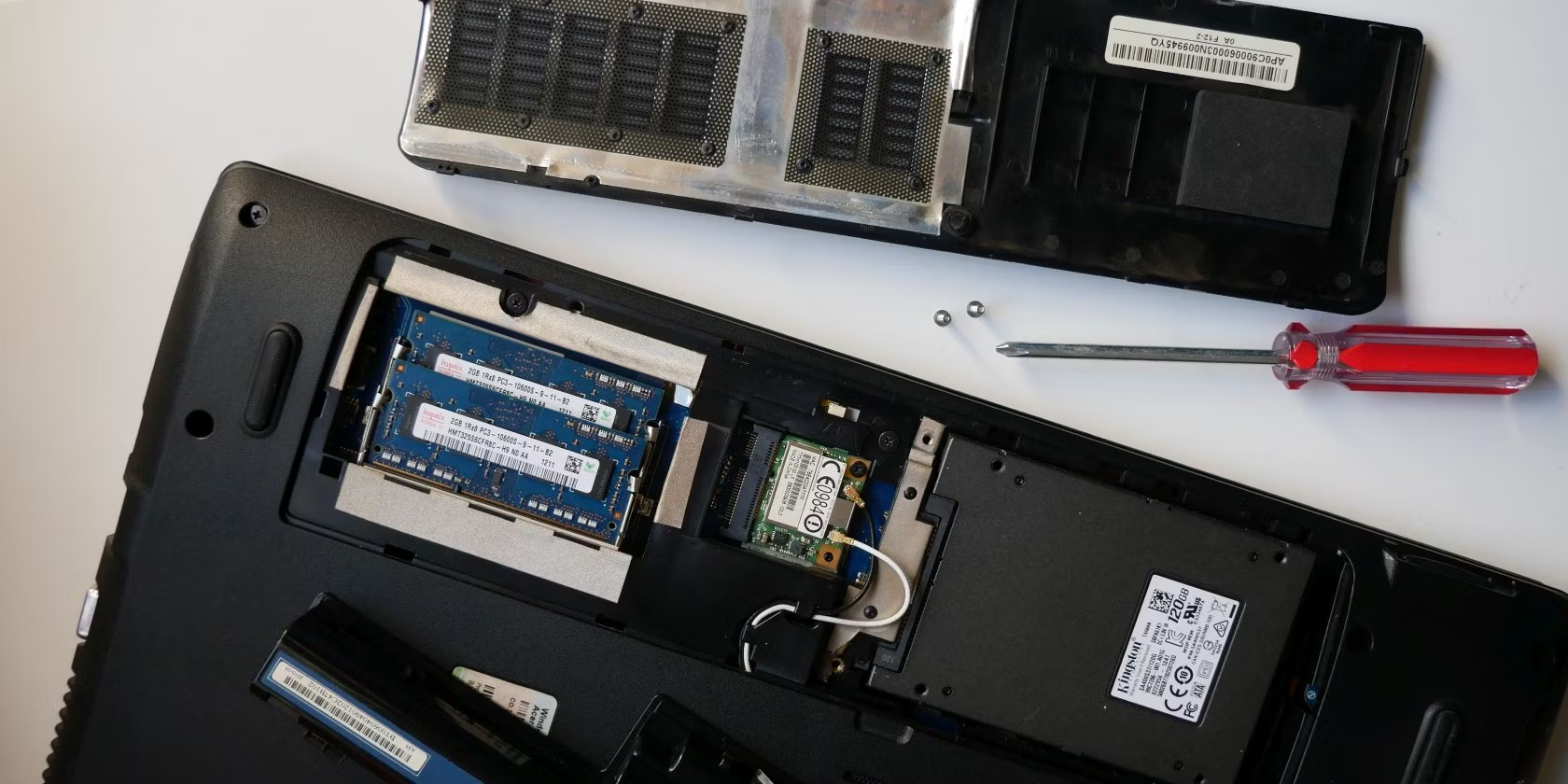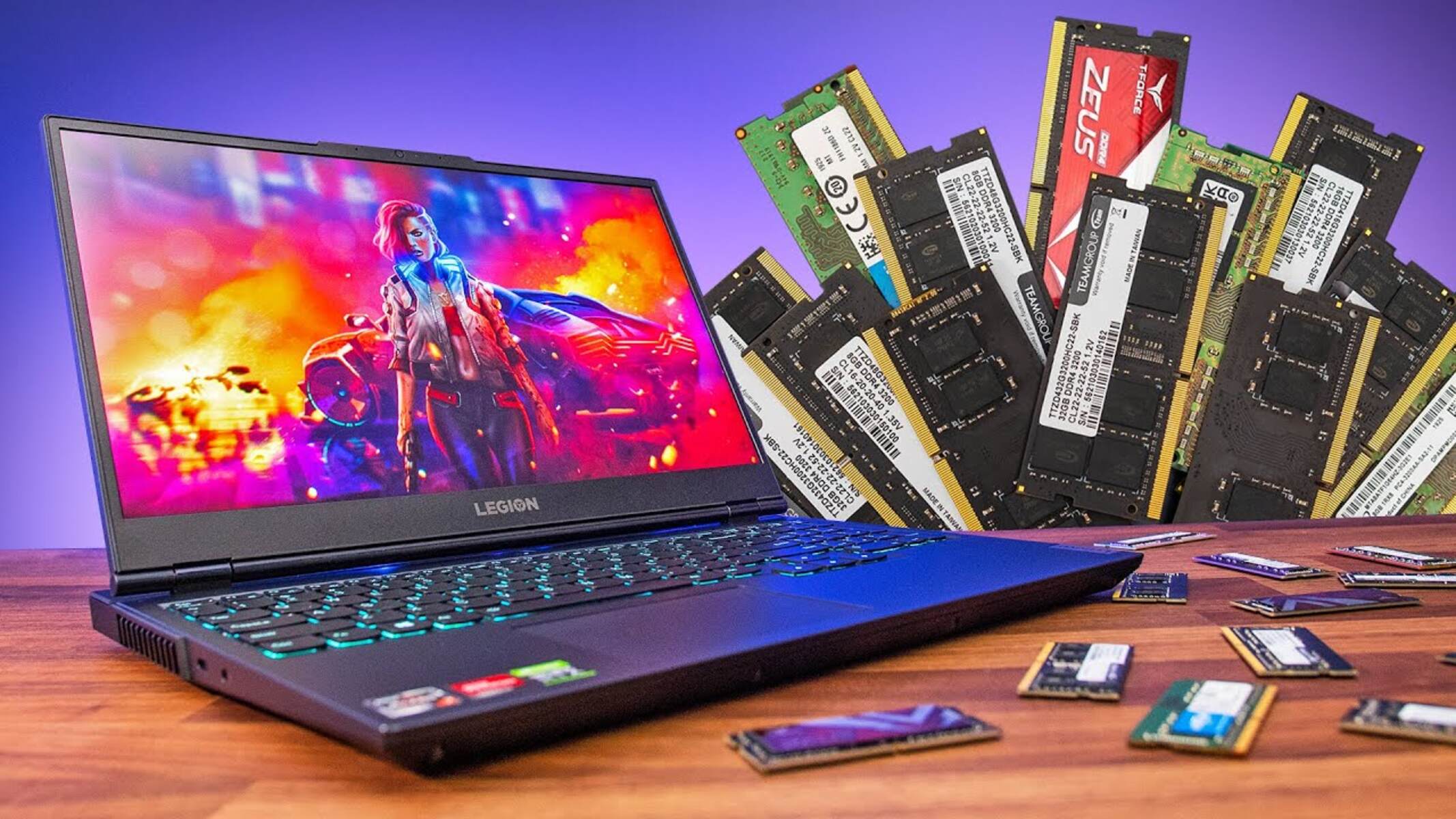Introduction
Welcome to our comprehensive guide on upgrading the RAM in your laptop. If you’re experiencing lag or slow performance, a memory upgrade could be just what you need to give your laptop a boost. Adding more RAM can significantly improve multitasking capabilities, increase overall system performance, and enhance your overall computing experience.
RAM, or Random Access Memory, is a crucial component of your laptop that temporarily stores data for quick access by the processor. It plays a vital role in running applications, opening multiple tabs, and handling complex tasks efficiently. However, as technology advances and software requirements increase, the amount of RAM needed to run smoothly also grows.
In this guide, we’ll provide you with essential information about upgrading the RAM in your laptop. We’ll explore factors to consider before upgrading, how to determine the maximum RAM capacity, and the benefits of increasing your laptop’s memory. Additionally, we’ll provide a step-by-step guide to installing RAM and offer troubleshooting tips for common issues you may encounter.
Before diving into the upgrade process, it’s crucial to note that not all laptops have upgradable RAM. Some laptops come with soldered memory modules, making them non-upgradable. Therefore, it’s essential to check your laptop’s specifications and compatibility before attempting to upgrade the RAM.
Ready to give your laptop a performance boost? Let’s explore the world of laptop RAM upgrades and unleash the full potential of your machine!
Factors to Consider Before Upgrading RAM in your Laptop
Before diving into the world of RAM upgrades, it’s essential to consider a few factors to ensure a successful and effective upgrade process. Here are some key factors to keep in mind:
- Compatibility: One of the most critical factors to consider is the compatibility of the RAM modules with your laptop’s motherboard. Not all RAM modules are compatible with every laptop, so it’s crucial to check your laptop’s specifications and ensure compatibility before making a purchase.
- Available Slots: Take note of the number of available RAM slots on your laptop’s motherboard. Some laptops have only one slot, while others may have two or more. Knowing the number of slots will help determine the maximum RAM capacity your laptop can support.
- Current RAM Configuration: It’s important to know the current RAM configuration of your laptop, including the type, speed, and capacity of your existing RAM modules. This information will help you determine the compatible RAM modules for an upgrade.
- Operating System Requirements: Consider the operating system requirements of the applications you frequently use. If you run resource-intensive applications or multitask heavily, you may need more RAM to ensure smooth performance.
- Budget: Upgrading RAM involves a financial investment, so it’s important to set a budget for your upgrade. Consider the cost of the RAM modules and ensure it aligns with your budget while meeting your performance needs.
By taking these factors into account, you’ll be well-prepared to make an informed decision about upgrading the RAM in your laptop. Ensure compatibility, understand your current configuration, evaluate your usage requirements, and set a suitable budget. Armed with this knowledge, you can proceed confidently with your RAM upgrade, knowing that you’ve considered all the necessary factors for a successful enhancement.
Checking the Current RAM Configuration of your Laptop
Before proceeding with a RAM upgrade, it’s important to understand the current RAM configuration of your laptop. By knowing the type, speed, and capacity of the existing RAM modules, you can make an informed decision about the upgrade. Here’s how you can check the current RAM configuration:
- System Information: One way to check the current RAM configuration is by using the system information utility on your laptop. On Windows, you can access it by pressing the Windows key + R to open the Run dialog box, then type “msinfo32” and hit Enter. In the System Information window, navigate to the “System Summary” section, where you’ll find information about the total physical memory installed.
- Task Manager: Another quick way to check the current RAM configuration is by using the Task Manager. On Windows, you can open it by pressing Ctrl + Shift + Esc. In the Task Manager window, click on the “Performance” tab and then select “Memory” from the sidebar. You’ll see details about the installed RAM, including its size and usage.
- BIOS Setup: Some laptops provide RAM information in the BIOS setup. To access the BIOS, restart your laptop and look for a prompt to press a specific key (e.g., F2 or Delete) to enter the setup. Once in the BIOS, navigate to the system information or memory configuration section to view the RAM details.
- Third-Party Software: There are also various third-party software programs available that can provide detailed system information, including RAM configuration. Some popular options include CPU-Z, Speccy, and HWiNFO. Download and install one of these programs and run it on your laptop to get comprehensive details about your RAM modules.
By using one or more of these methods, you’ll be able to determine the type (DDR3, DDR4, etc.), speed (MHz), and capacity (in gigabytes) of the existing RAM modules in your laptop. This information is crucial when considering an upgrade, as it helps you ensure compatibility with the new RAM modules you plan to install.
Remember to jot down the current RAM configuration or take a screenshot for reference during the upgrade process. Once you’re armed with this information, you can proceed to determine the maximum RAM capacity and start planning your RAM upgrade.
Understanding RAM Compatibility
When upgrading the RAM in your laptop, it’s crucial to ensure compatibility between the new RAM modules and your laptop’s motherboard. Here are some key factors to consider when it comes to RAM compatibility:
- Type of RAM: The type of RAM modules supported by your laptop is an important consideration. The most common types include DDR3, DDR4, and DDR4X. Each type has a different physical design and electrical interface, so it’s essential to check your laptop’s specifications to determine which type is compatible.
- Speed of RAM: RAM modules have different speed ratings in MHz (megahertz), which determine how quickly data can be read or written. It’s crucial to match the speed of the new RAM modules with the existing ones or the maximum speed supported by your laptop. Mixing different RAM speeds can lead to compatibility issues or limited performance.
- Capacity Support: Every laptop has a maximum RAM capacity it can support due to motherboard limitations. It’s important to know the maximum amount of RAM your laptop can handle before purchasing new modules. Exceeding the maximum capacity may result in the system not recognizing the additional RAM or causing stability issues.
- Number of Modules: Some laptops require specific configurations when it comes to the number of RAM modules. For example, some laptops may only support even numbers of modules or have a maximum limit per slot. It’s essential to check your laptop’s specifications to ensure proper installation and compatibility.
- Form Factor: RAM modules come in different physical sizes, known as form factors. The most common form factors for laptop RAM are SO-DIMM (Small Outline Dual Inline Memory Module) and Micro-DIMM. It’s crucial to choose RAM modules with the correct form factor to ensure they fit into the slots on your laptop’s motherboard.
By thoroughly understanding the compatibility requirements of your laptop, you can make an informed decision when selecting RAM modules for an upgrade. Consult your laptop’s documentation or visit the manufacturer’s website to find detailed information about the compatible RAM types, speeds, and maximum capacities. You can also consider reaching out to the manufacturer’s support team for assistance in determining the compatibility of RAM modules.
Keep in mind that mixing different types or speeds of RAM modules can potentially lead to compatibility issues and hinder optimal performance. Therefore, it’s recommended to install RAM modules that match or exceed the specifications of the existing modules to ensure compatibility and maximize system performance.
How to Determine the Maximum RAM Capacity of your Laptop
Determining the maximum RAM capacity your laptop can support is an essential step before upgrading. Here are some methods to help you figure out the maximum RAM capacity for your laptop:
- Manufacturer’s Documentation: The first place to look for information about your laptop’s maximum RAM capacity is the manufacturer’s documentation or the user manual. These resources often provide detailed specifications, including the maximum supported RAM capacity.
- Online Specifications: If you don’t have access to the manufacturer’s documentation, you can visit the manufacturer’s official website. Most manufacturers have a support section where you can search for your laptop model and find the specifications, including the maximum RAM capacity.
- System Information Utility: The system information utility in your laptop’s operating system can also provide details about the maximum RAM capacity. On Windows, you can access it by pressing the Windows key + R to open the Run dialog box, then type “msinfo32” and hit Enter. In the System Information window, you’ll find information about the maximum memory supported by your laptop.
- BIOS Setup: Another method is to check the BIOS setup. Restart your laptop and look for a prompt to press a specific key (e.g., F2 or Delete) to enter the setup. Once in the BIOS, navigate to the system information or memory configuration section to view the maximum RAM capacity.
- Third-Party Software: Various third-party software programs are available that can provide detailed information about your laptop, including the maximum RAM capacity. CPU-Z, Speccy, and HWiNFO are popular options that can display this information accurately.
It’s important to note that the maximum RAM capacity is determined by your laptop’s motherboard and chipset, which have specific limitations. It’s vital to respect these limitations and avoid installing more RAM than the system can handle, as it may lead to stability issues or system failure.
Once you’ve determined the maximum RAM capacity, you can plan your upgrade accordingly. Consider your budget, the current RAM configuration, and your usage requirements to decide on the optimal amount of RAM to install. It’s also worth considering future needs and potential software advancements to ensure your laptop remains capable of handling upcoming tasks and applications.
By following these steps, you’ll be well-prepared to upgrade your laptop’s RAM to its maximum capacity, enhancing its performance and allowing for smoother multitasking and application usage.
Benefits of Upgrading RAM
Upgrading the RAM in your laptop can bring numerous benefits and improve your overall computing experience. Here are some key advantages to consider when upgrading your laptop’s RAM:
- Improved Performance: Increasing the amount of RAM allows your laptop to handle more data simultaneously, resulting in improved performance and faster response times. With more RAM, you can run multiple applications smoothly without experiencing lag or slowdowns.
- Enhanced Multitasking: Adding more RAM provides your laptop with the necessary resources to handle multiple tasks simultaneously. You can switch between applications quickly, run resource-intensive programs, and work on demanding projects without encountering performance bottlenecks.
- Better System Responsiveness: RAM plays a crucial role in storing data that is actively used by the computer’s processor. Upgrading the RAM allows for faster data access, which translates into overall system responsiveness, snappier application launches, and reduced loading times for large files.
- Improved Gaming Experience: For gamers, upgrading RAM can greatly enhance the gaming experience. Games with high-resolution graphics and complex environments require a significant amount of RAM to run smoothly. Upgrading RAM allows your laptop to meet the demanding requirements of modern games, minimizing lag and ensuring an immersive gaming experience.
- Increased Virtual Machine Performance: If you frequently run virtual machines on your laptop, upgrading RAM is essential. Virtual machines require a substantial amount of memory to function efficiently. With additional RAM, you can allocate more memory to virtual machines, allowing them to run smoothly and seamlessly.
- Future-Proofing: Technology is constantly evolving, and software requirements continue to increase. By upgrading the RAM in your laptop, you are future-proofing your system to accommodate upcoming software updates and advancements. This ensures that your laptop remains capable of handling new tasks and demanding applications even as they become more resource-intensive.
While upgrading the RAM alone may not solve all performance-related issues, it is often an effective and relatively affordable solution to improve system speed and responsiveness. However, it’s important to note that the benefits of upgrading RAM may vary depending on your laptop’s overall hardware configuration and the specific tasks you perform.
Before proceeding with a RAM upgrade, carefully evaluate your needs and consider the benefits it will bring. With the right amount of RAM, you can significantly enhance the performance of your laptop and enjoy a smoother, more efficient computing experience.
Step-by-Step Guide to Installing RAM in your Laptop
Ready to upgrade the RAM in your laptop? Here’s a step-by-step guide to help you through the installation process:
- Gather the Necessary Tools: Start by gathering the tools needed for the RAM installation. You’ll typically need a small screwdriver (usually Phillips head) and an anti-static wrist strap or mat to prevent any electrostatic discharge that could damage sensitive components.
- Power Off and Unplug: Before beginning the installation, shut down your laptop and unplug the power adapter. It’s important to ensure all power sources are disconnected to avoid any potential damage during the installation process.
- Locate the RAM Slot(s): Find the RAM slot(s) on your laptop’s motherboard. Depending on your laptop model, the location and accessibility of the RAM slots may vary. Consult your laptop’s documentation or the manufacturer’s website if you’re unsure.
- Remove the Access Panel: Some laptops have a removable panel on the bottom that provides access to the RAM slots. Use a screwdriver to remove the panel, following the manufacturer’s instructions.
- Discharge Static Electricity: To prevent any damage from static electricity, attach the anti-static wrist strap to your wrist or place an anti-static mat on your work surface. This helps to ground any static electricity and protect your laptop’s components.
- Remove Existing RAM (If Needed): If there are existing RAM modules, gently press the clips on either side of the module to release it. Carefully pull the module out at an angle. Note that some laptops may have modules held in place with screws or other mechanisms, so refer to your laptop’s documentation for specific instructions.
- Insert the New RAM Module: Align the notches on the new RAM module with those in the RAM slot. Insert the module at a slight angle and press it firmly until it clicks into place. Ensure that the module is securely seated in the slot.
- Repeat for Additional Modules: If you have multiple RAM slots, repeat the process for each module you wish to install, if compatible. Some laptops allow for dual-channel memory configurations, so consult your laptop’s documentation for specific guidelines.
- Replace the Access Panel: If you removed an access panel earlier, carefully place it back and secure it with the screws. Ensure it is properly aligned and snug.
- Power On and Verify: Once the RAM modules are installed, connect your laptop to the power adapter and turn it on. Go to the system information utility or the Task Manager to verify that the new RAM is recognized and the correct amount is displayed.
That’s it! You’ve successfully installed new RAM modules in your laptop. Enjoy the increased performance and capabilities that come with the additional memory.
Remember, if you encounter any difficulties or have specific questions about your laptop model, consult the manufacturer’s documentation or reach out to their support team for further assistance. Following proper installation procedures and taking precautions will ensure a smooth RAM upgrade process.
Common Issues and Troubleshooting Tips
Though upgrading the RAM in your laptop is generally a straightforward process, occasionally, you may encounter some issues. Here are some common problems that may arise during RAM installation and troubleshooting tips to help you resolve them:
- RAM Not Recognized: If your laptop does not recognize the newly installed RAM, double-check that the modules are properly seated in the slots. Ensure they are firmly installed and fully clicked into place. If the issue persists, try removing and reinserting the modules, applying slightly more pressure to ensure they are securely connected.
- RAM Compatibility Issues: It’s crucial to ensure that the RAM modules you are installing are compatible with your laptop’s motherboard. Check the module specifications, including type, speed, and capacity, to make sure they match your laptop’s requirements. If you encounter compatibility issues, consider consulting the manufacturer’s documentation or seeking support from their customer service.
- Memory Errors or Blue Screen: If you experience memory errors, random crashes, or the dreaded blue screen of death (BSOD), it could indicate a problem with the new RAM modules. Try removing the modules and testing them individually in each slot to identify any faulty modules. If you find a faulty module, contact the manufacturer for a replacement.
- Insufficient RAM Slots: Some laptops may have a limited number of RAM slots, restricting the maximum amount of RAM you can install. If you’ve reached the maximum capacity allowed by your laptop’s configuration, consider upgrading to larger capacity modules or replacing existing modules with higher capacity ones.
- Inadequate Power Supply: Insufficient power supply can cause instability and unexpected errors. Ensure that your laptop’s power adapter is providing enough power to support the new RAM modules. If in doubt, try using a higher-rated power adapter recommended by the laptop manufacturer.
- Removal of Access Panel: If you encounter difficulties in removing or replacing the access panel, refer to your laptop’s documentation for specific instructions. Applying excessive force or improper techniques may damage the panel or the components beneath.
- Static Discharge: To avoid damage to sensitive components, always use an anti-static wrist strap or mat when handling RAM modules. Avoid touching the gold contacts on the modules directly, as oils or residue from your fingers may interfere with proper connectivity.
If you encounter any persistent issues or are uncertain about the troubleshooting steps, it’s recommended to seek assistance from a certified technician or the manufacturer’s support team. They can provide expert guidance, help diagnose problems more accurately, and offer suitable solutions.
Remember, patience and attention to detail are crucial when troubleshooting RAM-related issues. With proper troubleshooting and resolution of any problems that arise, you can enjoy the benefits of increased RAM and a more productive laptop experience.
Frequently Asked Questions about Laptop RAM Upgrades
Here are answers to some commonly asked questions about laptop RAM upgrades:
Q: Can I upgrade the RAM in my laptop?
A: In most cases, yes. However, it’s important to check your laptop’s documentation or consult the manufacturer’s website to ensure compatibility and accessibility for RAM upgrades.
Q: How much RAM can I install in my laptop?
A: The maximum amount of RAM that can be installed in a laptop depends on the motherboard and chipset limitations. Refer to your laptop’s documentation or manufacturer’s website to determine the maximum RAM capacity for your specific model.
Q: Do I need to match the exact specifications of my existing RAM modules when upgrading?
A: It is generally recommended to match the type, speed, and capacity of the existing RAM modules to maintain optimal compatibility and performance. However, in some cases, mixed configurations may work, but they can potentially result in reduced performance or compatibility issues.
Q: Should I upgrade RAM in a laptop if I mainly use it for casual tasks?
A: While casual tasks may not require a substantial amount of RAM, upgrading can still improve overall performance and responsiveness, especially when multitasking or running resource-intensive applications. Additionally, increasing RAM capacity can help future-proof your laptop for upcoming software updates.
Q: Can I upgrade RAM in a laptop with soldered memory?
A: Unfortunately, laptops with soldered memory modules do not allow for RAM upgrades. The memory is permanently attached to the motherboard, preventing any modifications. It’s important to check if your laptop has removable RAM modules before considering an upgrade.
Q: Can I mix different brands of RAM modules?
A: Mixing different brands of RAM modules may work in some cases. However, to ensure compatibility and minimize potential issues, it is generally recommended to use RAM modules from the same brand and series.
Q: Will upgrading RAM void my laptop’s warranty?
A: It depends on the laptop manufacturer and their warranty policies. Some manufacturers allow RAM upgrades without voiding the warranty, while others may have specific guidelines or require upgrades to be performed by authorized technicians. Always check your laptop’s warranty terms and conditions or contact the manufacturer for clarity.
Q: Can I remove the additional RAM from my laptop if I no longer need it?
A: Yes, you can remove the additional RAM from your laptop if you no longer need it. Simply follow the installation steps in reverse order, ensuring that the laptop is powered off and disconnected from the power adapter during the removal process.
These are general answers to frequently asked questions about laptop RAM upgrades. Keep in mind that specific laptop models and manufacturers may have unique considerations or guidelines. It’s always advisable to consult your laptop’s documentation or reach out to the manufacturer’s support team for personalized assistance and advice.
Conclusion
Upgrading the RAM in your laptop can be a valuable investment that significantly improves overall performance and enhances your computing experience. By considering factors such as compatibility, current RAM configuration, and your laptop’s maximum capacity, you can make informed decisions about upgrading RAM modules.
We explored the benefits of upgrading RAM, such as improved multitasking capabilities, enhanced system responsiveness, and future-proofing your laptop for upcoming software advancements. Additionally, we provided a step-by-step guide to help you through the installation process, along with common issues you might encounter and troubleshooting tips to overcome them.
Remember to gather the necessary tools, power off your laptop, and locate the RAM slots before proceeding with installation. Ensure compatibility, properly insert the new RAM modules, and verify their recognition once the laptop is powered on. In the event of any issues, consult your laptop’s documentation or contact the manufacturer’s support team for assistance.
By upgrading your laptop’s RAM, you can unlock its full potential, enjoy smoother multitasking, increased performance, and better responsiveness. Whether you’re a casual user, a gamer, or a professional handling resource-intensive tasks, upgrading the RAM can significantly enhance your productivity and overall computing experience.
Remember that while RAM upgrades can bring noticeable improvements, they may not solve all performance issues. It’s essential to consider other factors such as processor speed, storage type, and software optimization for a holistic approach to enhancing your laptop’s performance.
We hope this guide has provided you with the necessary information and guidance for a successful RAM upgrade in your laptop. Enjoy the benefits of increased memory, improved speed, and a more efficient computing experience!







